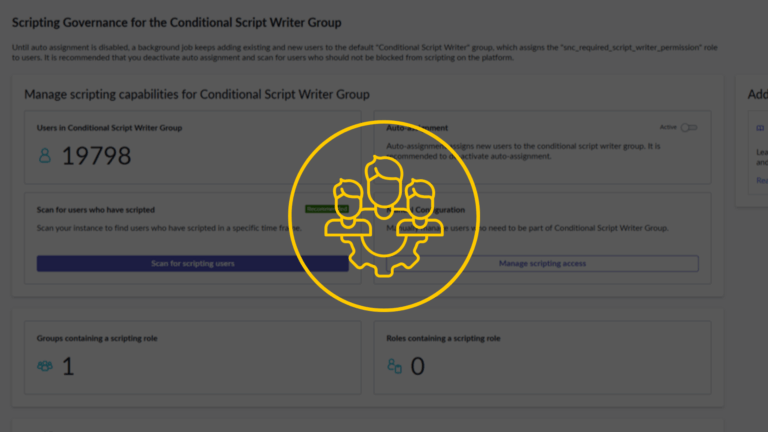In the ever-evolving digital world, cybersecurity is a critical safeguard. As cyberthreats grow in numbers and complexity, the call for a proactive and comprehensive vulnerability management system grows. Vulnerability response is the proactive part of IT security operations, which ensures that vulnerabilities in the IT ecosystem of an organization can be preemptively resolved before they turn into security incidents. This article delves into the functionality and benefits of Vulnerability Response in ServiceNow and presents you with two new features from the Vancouver release.

Proactive Safeguarding and Automations are a Must
The digital age is characterized by an increasing number of cyber threats. Taking an automated approach is crucial. According to a 2023 report on the cybersecurity threat landscape from the European Union Agency for Cybersecurity (ENISA), the average total cost of a data breach is USD 4.35 million, rising to USD 4.82 million when critical infrastructure is targeted. However, the average cost decreases to USD 3.05 million when security AI and automation are used. This underscores the need for automation in security operations and highlights the importance of preemptive measures to prevent and proactively safeguard against data breaches and other types of security incidents.
The Key Benefits of Vulnerability Response in ServiceNow
Vulnerability Response in ServiceNow is a connected platform that swiftly identifies vulnerabilities and organizes responses across security and IT teams. It ensures that critical vulnerabilities are proactively tracked and addressed, safeguarding businesses, employees, and customers from potential threats. Having only a reactive stance in cybersecurity can be detrimental. Vulnerability Response ensures that organizations stay ahead of the curve, identifying and addressing vulnerabilities before they become significant threats.
As a digital early warning system, Vulnerability Response in ServiceNow not only spots potential vulnerabilities but also sounds the alarm and gathers a team of experts to handle the situation before it becomes a security incident. By automating the flow of information from detection to resolution, it eliminates manual roadblocks. This feature also provides stakeholders with the opportunity to stay updated on vulnerability statuses, ensuring that they are always informed and able to make timely decisions.

Integration of Vulnerability Data from External Sources
Vulnerability Response represents a proactive and modern approach to cybersecurity. It consolidates vulnerability data from various sources, such as the National Vulnerability Database (NVD) and integrates with third-party tools like Tenable, Rapid7, and more. Leveraging ServiceNow’s Configuration Management Database (CMDB) and other platform data provides a more comprehensive view of potential threats. This integrated and enriched data empowers businesses to quickly identify, prioritize, and tackle vulnerabilities, enhancing their cybersecurity.
 A Unified Approach
A Unified Approach
ServiceNow’s strength lies in its unified platform—Vulnerability Response is no different. By having all IT operations and cybersecurity on a single platform, organizations benefit greatly, as all modules within ServiceNow can interact seamlessly with other modules and have strong ties to Risk Management, Security Incident, and Change Management.
With foundational data interacting, Vulnerability Response can provide a comprehensive view of the cybersecurity posture across the enterprise, enabling more informed, data-driven decision-making. This holistic view streamlines operations, fostering efficient communication and collaboration among IT departments and the teams tasked with addressing vulnerability issues that may arise.
The Most Important Enhancements from the Vancouver Release
The Vancouver release introduces a slew of enhancements that furthers the importance of Vulnerability Response in the cybersecurity toolkit. The two that I find most important are:
- The Unified Vulnerability Response Dashboard: A centralized platform amalgamates data from diverse vulnerability scanners, offering a panoramic view of an organization’s cybersecurity landscape. The vulnerabilities related to infrastructure, cloud, applications, and containers can be viewed in a centralized dashboard for better visibility and remediation.
- Software Bill of Materials (SBOM): Third-party components provide you with many advantages for the rapid creation and release of your software projects. However, there are risks associated with using open-source software, such as: lack of visibility into component integrity, vulnerabilities in the software, and licensing compliance. SBOM in Vulnerability Response allows organizations to identify and manage latent risks related to third-party applications accurately.
With security incidents causing massive headaches, it’s clear that being proactive is the way to go. Vulnerability Response in ServiceNow is your ally in staying ahead of the bad guys, protecting your business, customers, and reputation. It’s time to jump on board and enjoy a more secure digital journey with this fantastic tool.
Stay tuned for my next article about Vulnerability Response in ServiceNow, where I’ll be discussing our best practices for implementing the tool most effectively.





